#old school dungeons and dragons
Text
I’ve illustrated a whole tabletop adventure Zine and launched it on Kickstarter! If you like Cryptids and High Strangeness and retro inspired art, consider supporting it! It’s 5E and Old School Essentials compatible 👽🔦


https://www.kickstarter.com/projects/mdntwvlf/the-village-of-bray?ref=1rzo3q
#vintage art#retrosupply#retro art#retro aesthetic#vintage#horror#cryptid#urban legend#cryptozoology#mothman#flatwoods monster#dnd#dungeons and dragons#dnd 5e#old school essentials
105 notes
·
View notes
Text
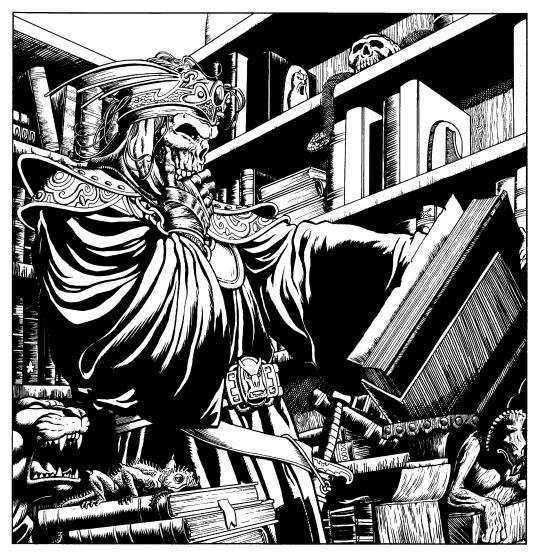
60 notes
·
View notes
Text

Hey, you! Here are 12 old school dungeon ideas inspired by In Search of the Unknown, a classic D&D adventure.
🐉 For more ideas, check out the full article →
#osr#d&d#art#dungeons & dragons#dnd#b/x#dungeons and dragons#old school renaissance#game design#gygax
60 notes
·
View notes
Text

#mind flayer#illithid#d&d monster#d&d memes#ad&d 1e#ttrpg#d&d#dungeons and dragons#ttrpg memes#old school renaissance#osr#ad&d#ttrpg community#ttrpg art#d&d art#old school d&d#old school d&d art
33 notes
·
View notes
Text

Vermis Inspired artwork :)
I am finally starting to understand how to balance the half tone filter.

#digital art#beginner artist#art#fantasy art#my art#artwork#horror art#fantasy#horror#vermis#plastiboo#old school rpg#dungeons and dragons#ttrpg#kritaart#made with krita#krita
27 notes
·
View notes
Text
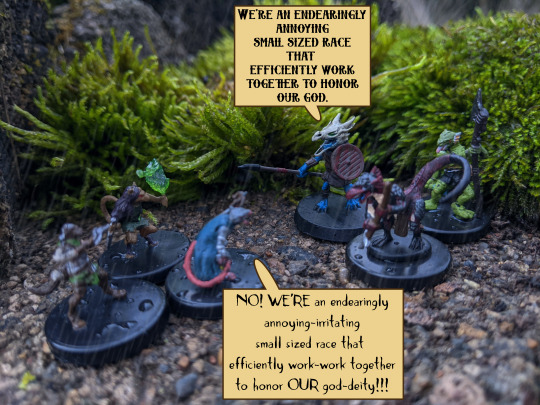
Kobolds meet Skaven
Made my own "comic" this time, hopefully it's at least a little funny
Should have included that they both live underground, and rapidly reproduce, lol
#kobold#skaven#dungeons and dragons#warhammer fantasy#warhammer#kobolds#fantasy#fantasyart#sword and sorcery#middleages#medieval#dragons#dragon#pathfinder#old school essentials#ratfolk
45 notes
·
View notes
Text

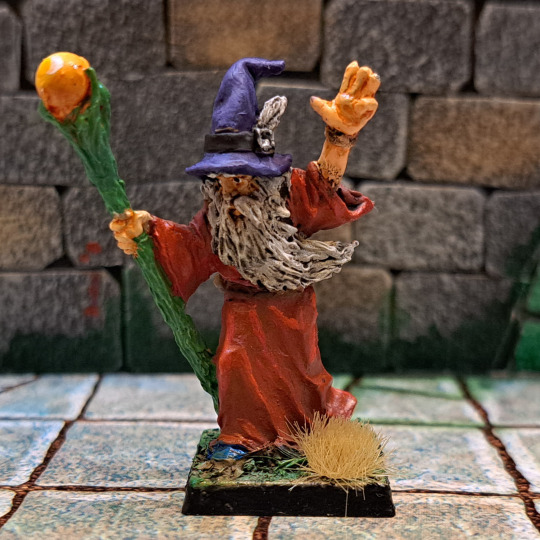
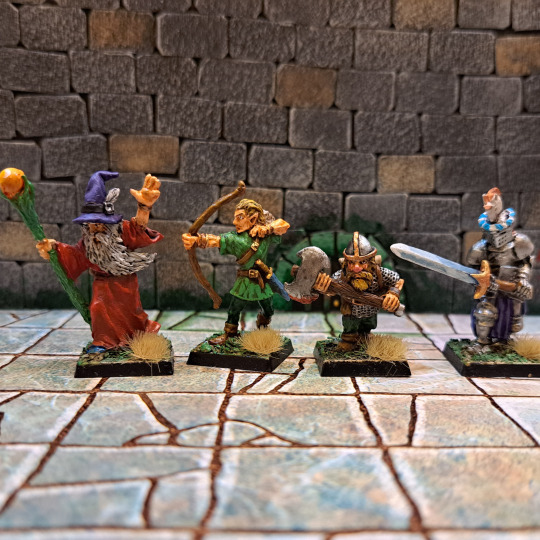


#adventurers#miniatures#paintingminiatures#dungeons and dragons#old school miniatures#dungeoncrawl#oldhammer
21 notes
·
View notes
Text
I totally forgot to include one of my favorite things about the way old D&D editions were written in my post about the subject, but I'm not going to tag this little tidbit onto that monstrosity. So here goes!
Book II: Monsters & Treasure helpfully informs us that vampires are properly of the undead class rather than lycanthropes.
Apparently there was some previous confusion about that, good thing they clarified it.
20 notes
·
View notes
Text

The Perilous Pear & Plum Pies of Pudwick | coming soon | read about it at http://tppappop.carrd.co
| 🐛 | 52 page full-colour, fully illustrated creepy-crawly micro-setting for Melsonia written and illustrated by Josh Blincow (@goblincow). Shrink to insectoid size and adventure into the uncanny world that exists inside a sapient pear tree in this system agnostic weird fantasy pointcrawl.
| 🐜 | INSPIRED BY | HOLLOW KNIGHT | BUG FABLES | THE LEGEND OF ZELDA: THE MINISH CAP | HONEY I SHRUNK THE KIDS | A BUGS LIFE
| 🐞 | MINIATURE MISADVENTURE | A well-meaning outsider brings reckless magic into a small community on the eve of the local bake off. Hijinks ensue as chitinous consequence follows behind on a thousand scuttling limbs.
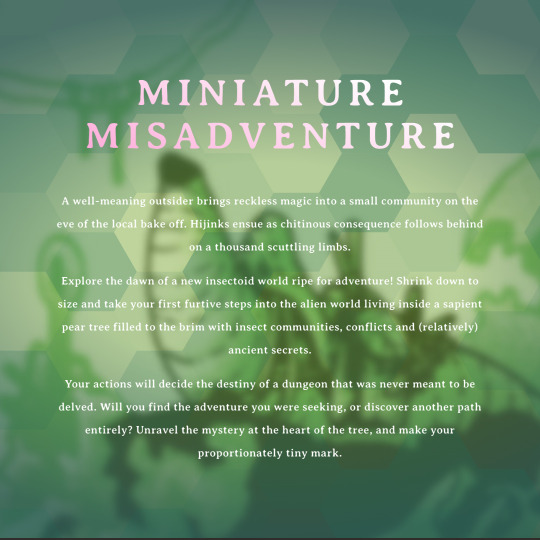
Explore the dawn of a new insectoid world ripe for adventure! Shrink down to size and take your first furtive steps into the alien world living inside a sapient pear tree filled to the brim with insect communities, conflicts and (relatively) ancient secrets.
Your actions will decide the destiny of a dungeon that was never meant to be delved. Will you find the adventure you were seeking, or discover another path entirely? Unravel the mystery at the heart of the tree, and make your proportionately tiny mark.
| 🐝 | FEATURES | 39 mischievous & menacing tritone illustrastions | vivid writing that animates a rich interconnected world | evocative pointcrawl-&-table adventure design | approachable, colour-coded information design that comfortably facilitates both table reference and playful reading.
| 🦗 | MANAGEABLE MECHANICS | self-contained adventure bookended with a food fight inciting incident and 5 villager NPCs | a perilous ticking clock | carefully interweaved pointcrawl map with 17 locations, 6 d3 vignette tables, 5 d4 rumour tables and 2 d4 encounter tables with location specific encounters | d100 worldly possessions table | d100 random encounters table | d20 bug name generator | 3 unique treasures | 6 page insectuary & 23 minimalist enemy statblocks | faction reference matrix | system agnostic rules for generating bug player characters.
| 🦟 | SYSTEM AGNOSTIC | compatability with old school TTRPGs like CAIRN | LABYRINTH LORD | OSE | KNAVE | DCC | B/X and easily adaptable for other fantasy tabletop roleplaying games like MAUSRITTER | TROIKA! | TUNNEL GOONS | MÖRK BORG and more.
| 🦋 | follow @goblincow for updates | goblincow.carrd.co
#tppappop#indie ttrpg#ttrpg#tabletop roleplaying#illustration#bugs bugs bugs#rpgs#OSR#old school essentials#knave#cairn#dungeon crawl#B/X#mausritter#troika#tunnel goons#mork borg#dnd#d&d#dungeons & dragons#dungeons and dragons#old school rpg#the undercroft#melsonia#goblincow#hexcrawl#hexflower#ttrpg design#hollow knight#bug fables
59 notes
·
View notes
Text
Read-list for an "old school D&D" fantasy (plus bonus)
This is a remake of an earlier post of mine, that I decided to update (some additional books were suggested to me, others I found out about later).
This is a reading-list of various literary works that heavily inspired or were heavily used in the creation of the first editons of Dungeons and Dragons - and thus, reading them will allow you to plunge back into what the original D&D was meant to look what/what it tried to emulate.
J.R.R. Tolkien's "The Lord of the Rings" and "The Hobbit". No surprise here, Tolkien's works were the start of modern fantasy and thus the main source of old-school D&D. In fact, D&D was originally created to be just a Lord of the Rings role-playing game - or to be precise a LotR wargame. This was the original intention. Which is why, quite famously, the very first version of D&D included elements such as the hobbits, the mithril and the balrogs. And when the Tolkien Estate pointed out the consequences of what was plagiarism, D&D changed these concepts to... "halflings", "mithral" and "balors". The only Tolkien-element D&D could preserve vaguely unchanged were the orcs, because the Tolkien Estate could not prove Tolkien had invented the term "orc". But even beyond that, D&D's dwarfs and elves and ents (sorry, treants) and wights and rangers all were heavily inspired by Tolkien - the gods of the orcs even use symbols such as an "eye of fire" and a "white hand"...
Poul Anderson's "Three Hearts and Three Lions". Poul Anderson was quite influential on early 20th century fantasy, and this specific book influenced D&D in three ways. On one side, it was one of the two sources for the "Order versus Chaos" conflict of D&D (the other being Moorcock). On the other the D&D trolls were inspired by the Three Hearts and Three Lion trolls. And finally the Paladin class was inspired by Anderson's Holger Carlsen character (the same way the Ranger was Tolkien's Aragorn). [This book also seems to have had some influence over the Fey of D&D?]
Michael Moorcock's "The Elric Saga". With Anderson's work, it was the other main source of the Order vs Chaos, Lawful vs Chaotic division of the D&D game. It also served as the main inspiration behind the D&D Drows, due to the Elric Saga shaping the original image of "Dark Elves" in fantasy, through its Melnibonéan Empire. D&D also originally collected references to the Elric world - creating many variation of Elric's evil magical sword Stormbringer through a variety of cursed soul-drinking weapons.
Robert E. Howard's "Conan the Barbarian". The source of heroic-fantasy the same way Lord of the Rings influenced epic fantasy, the world of Conan was also a huge source of inspiration for D&D - the most obvious reference being the Barbarian class, shaped for those who wanted to play Conan.
Fritz Leiber's "Fafhrd and the Gray Mouser". Originally intended as a parody of the Conan-style heroic fantasy, but promptly becoming a serious and admired work that created its own sub-genre of fantasy (the "sword and sorcery" genre), they also were inspirational for the first editions of D&D. Sometimes it is indirect - the "Thief" or "Rogue" classes were inspired by Leiber's Gray Mouser character - other times it is MUCH more direct. For example, among the numerous pantheons you could choose to use in early D&D, one was the various gods of Newhon and the city of Lankhmar, the universe of Fafhrd and the Gray Mouser. And the fantasy trope of "Thieves' Guild" made famous partially by D&D was originally an invention of Leiber.
Jack Vance's The Dying Earth. This emblematic series of the "science-fantasy" genre offered to D&D its magic system, which is generally known as "vancian magic". It was Jack Vance who had the idea that a wizard had to learn/store spells in their mind, with a limited number of spells they could carry in their brain, and that once cast the spell had to be re-learned or restored. Several spells and items of early D&D were also directly taken from the Dying Earth books - the "prismatic spray" or the "ioun stones".
H.P. Lovecraft's "Cthulhu Mythos". No need to explain how Lovecraft's brand of eldritch horror and alien-fantasy shaped the creatures and deities of early D&D, to the point that early on the deities and monsters of the Cthulhu Mythos were part of the pantheons you could chose to use - listed alongside the Newhon gods of Leiber, or the gods of the Conan universe.
While not fantasy works, the most famous creations of Edgard Rice Burroughs - Tarzan on one hand, and John Carter of Mars on the other, were claImed by Gygax to have been very influential to his creation of D&D.
Another author Gygax mentionned as being a huge influence for D&D was Fletcher Pratt - through his Harold Shea fantasy series, about a main character being carried away in various magical and fantastical worlds very different from each other, in which he has to adapt himself to new settings and learn new rules to avoid dangers and threats... Sounds familiar? The idea of world-travelling might also have been inspired by the science-fiction series by P.J. Farmers' World of Tiers: the rules of travel in D&D between the various planes of reality seem to have been inspired by Farmers' own rules for dimension-travel.
One of the lesser known influences of D&D is the fantasy series "Kothar" by Gardner Fox: Gygax explicitely said that the idea of the "Lich" as a D&D monster came from Fox's Kothar series.
Not a book, but movies: the Sinbad movies of the mid 20th century were influential on early D&D. Various monsters and creatures referenced pictures such as "The 7th Voyage of Sinbad" or "The Golden Voyage of Sinbad".
"The House on the Borderlands" by William Hope Hodgson was explicitely referenced by Gygax's 1979 module "The Keep on the Borderlands", and it might have heavily influenced the original depiction of the D&D orcs as pig-men...
The Shannara series by Terry Brooks has also been pointed out as an influence on D&D - while not on the very first edition, elements of the Shannara world seem to have influenced later ones...
Mind you, this is but a fragment of a much longer list known as the "Appendix N" composed by Gygax, and that lists all the books and pieces of work he took inspiration from when designing D&D. Beyond the most famous works evoked above he also listed:
Poul Anderson's "The High Crusade" and "The Broken Sword"
John Bellairs' "The Face in the Frost"
Leigh Brackett's works
Fredric Browns' works
I evoked before Burrough's Mars series, but Gygax also listed his "Venus series" and his "Pellucidar series".
Lin Carter's "World End" series
L. Sprague de Camp's "Lest Darkness Fall" and "The Fallible Fiend" and "The Carnelian Cube"
August Derleth's continuation of the Cthulhu Mythos.
Lord Dunsany's writings, of course.
Gardner Fox's "Kyrik" series
Sterling Lanier's "Hiero's Journey"
A. Merritt's "Creep, Shadow, Creep", "Moon Pool" and "Dwellers in the Mirage"
Michael Moorcock's "Hawkmoon" series (which is technically part of the wider universe of which the Elric Saga is the central piece)
Andre Norton's works
Fletcher Pratt's "Blue Star"
Fred Saberhagen's "Changeling Earth"
Margaret St. Clair "The Shadow People" and "Sign of the Labrys"
Stanley Weinbaum's works
Manley Wade Wellman's works
Jack Williamson's works
Roger Zelazny's "Amber" series, and "Jack of Shadows".
In 2007, Gygax even updated his Appendix N with a handful of new titles reflecting elements added to later editions of D&D:
Sterling Lanier's "The Unforsaken hiero"
Piers Anthony's "Split Infinity" series
And of course, Terry Pratchett's Discworld series
And since this post is all about updates, I will also include a list of works that were used as inspiration for current day/modern D&D - especially the fifth edition. Like that, you'll have the evolution of "old school D&D versus new school D&D". This list is taken from fragments here and there of interviews given by Mike Mearls, the Appendix E "Inspirational Reads" of the fifth edition, and Rodney Thompson's interviews.
Appendix E replaces several elements Gygax talked about in interviews or in his Appendix N: Leiber's work, Burroughs's Mars series, Howard's Conan, etc...
Appendix E adds among other things China Mieville's "Perdido Street Station", and Elizabeth Bear's "Range of Ghosts".
Mike Mearls said that what inspired him in his design work of modern D&D was Ursula LeGuin's "Earthsea" series, Patrick Rothfuss "The Name of the Wind", Saladin Ahmed "Throne of the Crescent Moon" and Octavia E. Butler's "The Parable of the Sower".
But Mearls also repeated several of the picks already used by Gygax. He invoked again The Elric Saga, and Roger Zelazny's Amber series, and Tolkien's Legendarium of course...
Rodney Thompson rather insisted on returning to the Anderson roots of the D&D fantasy: mostly "Three Heart and Three Lions", but also "The Broken Sword".
#fantasy#fantasy books#fantasy literature#d&d#old school d&d#dungeons and dragons#modern dungeons and dragons#inspiration#gygax#mike mearls#rodney thompson#appendix n#modern d&d#read list#reading list#science-fiction#science-fantasy
19 notes
·
View notes
Text

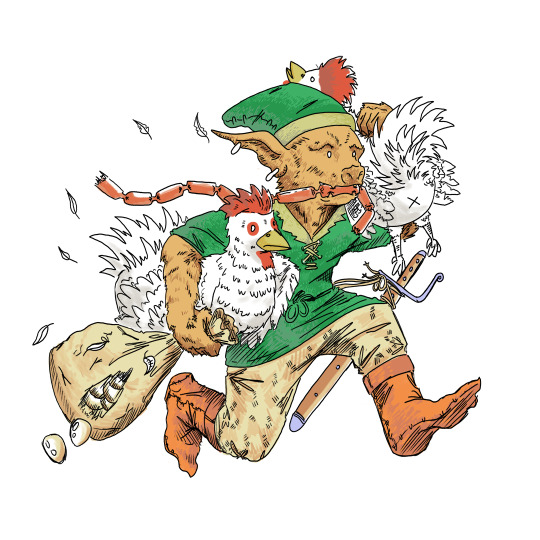
somebody stop that goblin! he's taking the chickens!
#jimenez madrid art#art by op#artists on tumblr#fantasy art#d&d art#dnd#dungeons & dragons#rpg art#digital illustration#d&d#goblin#goblincore#dnd monster#monster manual#monster#old school rpg#retro rpg#rpg#illustration
8 notes
·
View notes
Text

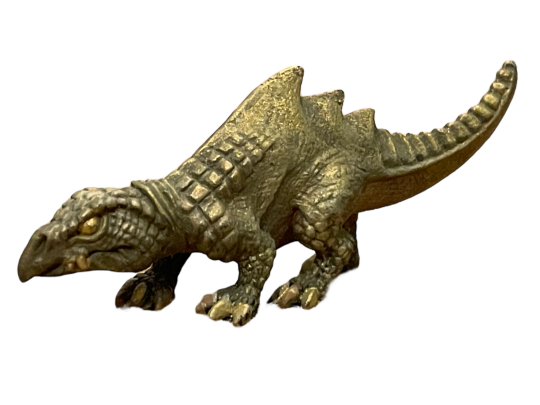
#old school#dnd#dungeons and dragons#80s#png#random pngs#transparent png#transparent background#random#transparent#pngs#weird png#cute pngs#antique
10 notes
·
View notes
Text
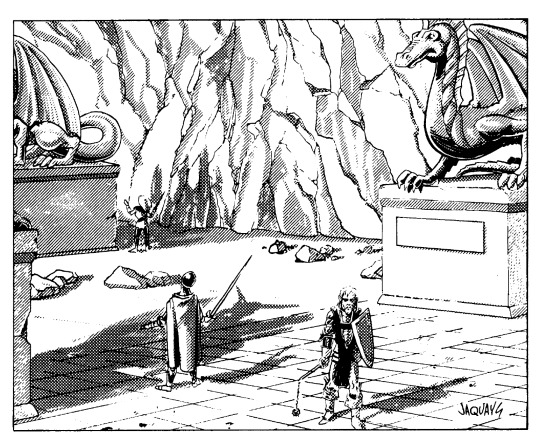
The Shattered Statue
38 notes
·
View notes
Text

Hey, you! Here are 12 old school dungeon ideas inspired by Expedition to the Barrier Peaks, an old-school adventure published in 1980.
#osr#d&d#art#dungeons & dragons#dnd#b/x#dungeons and dragons#old school renaissance#game design#gygax
115 notes
·
View notes
Text
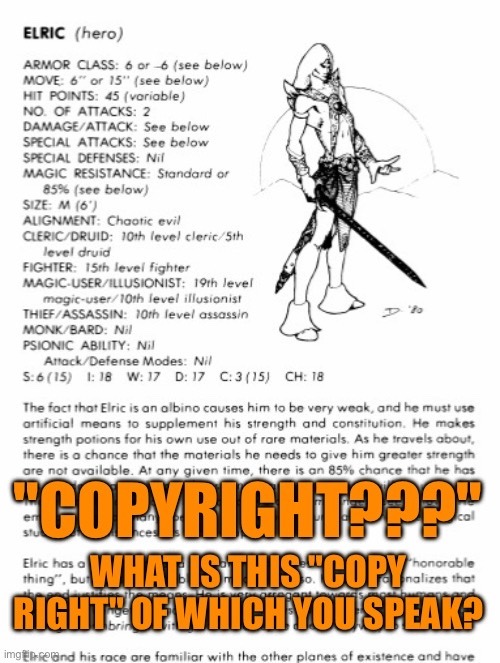
#deities & demigods#ad&d 1e#elric of melnibone#michael moorcock#dungeons and dragons#d&d#d&d memes#ttrpg memes#ttrpg#old school renaissance#osr#ttrpg community#ad&d#copyright
11 notes
·
View notes
Text

Mushroom knight inspired by vermis
#digital art#beginner artist#art#fantasy art#my art#artwork#horror art#fantasy#horror#vermis#plastiboo#ttrpg#old school rpg#krita#kritaart#made with krita#dungeons and dragons
18 notes
·
View notes